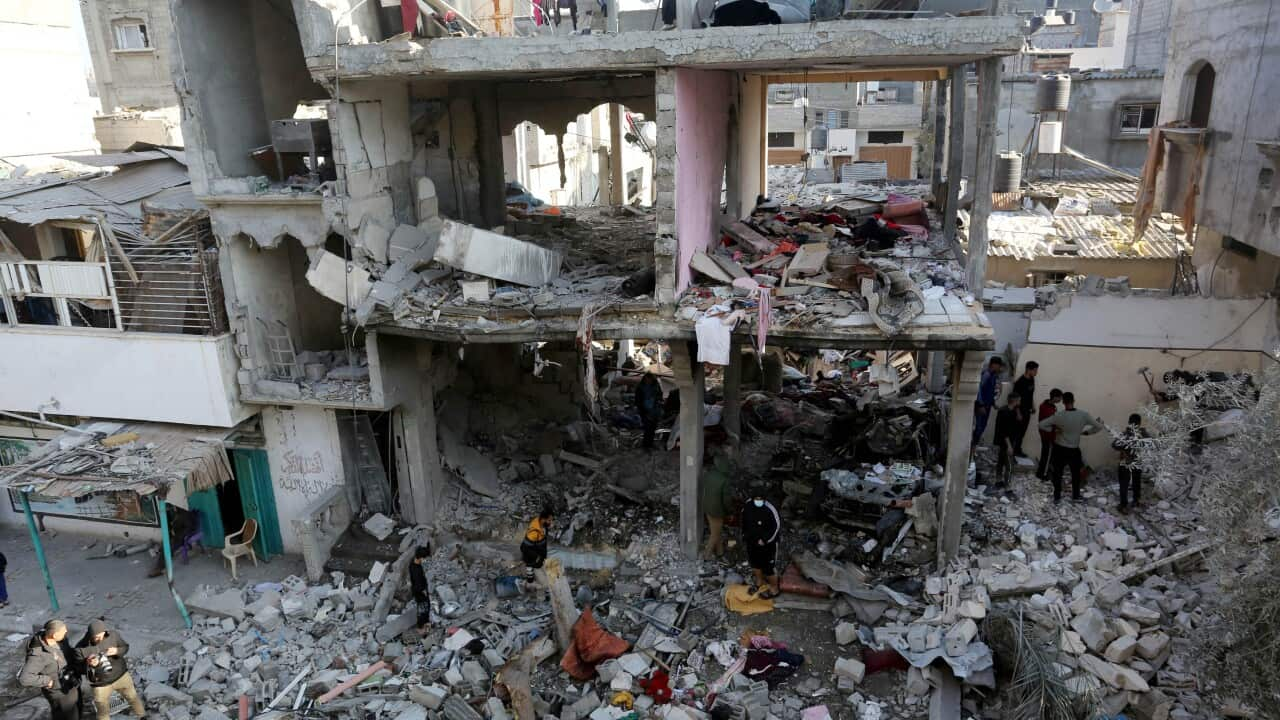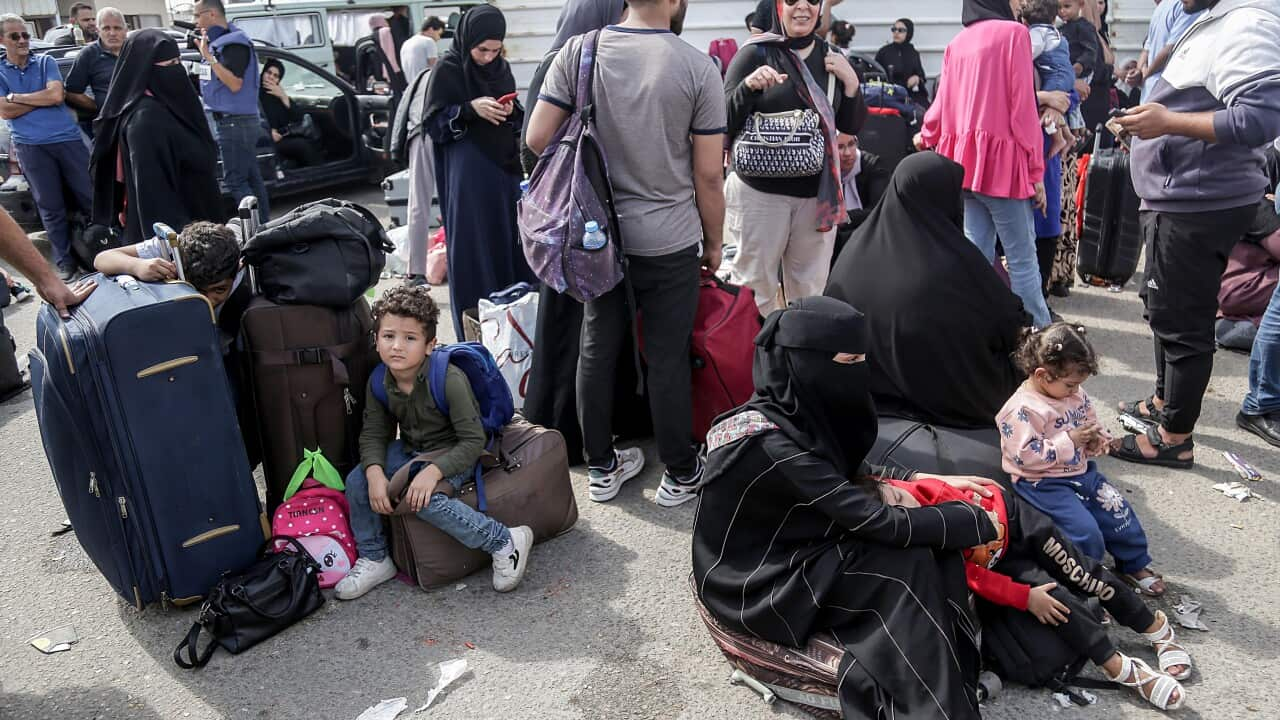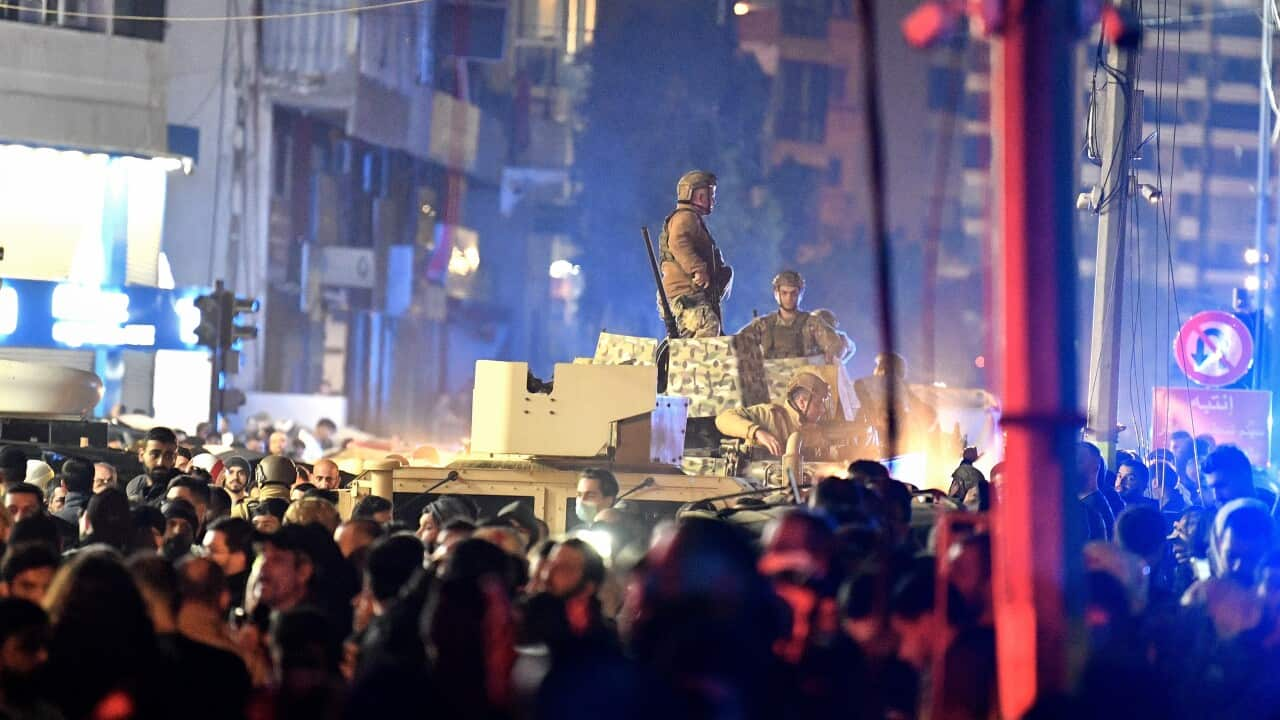Key Points
- Military experts say urban warfare in Gaza is extremely hazardous, comparing it to Fallujah, Mosul and Grozny.
- Israel's military has denied accusations that it is bombing the enclave "indiscriminately".
- As the war grinds on, international pressure over Israel's tactics and weaponry is intensifying.
Israel's recent assault on Gaza began with large-scale aerial bombings, with the Israel Defence Forces (IDF) targeting what they say were Hamas installations, command centres or headquarters.
Then the ground assault brought in thousands of infantry troops and tanks, aided by continued bombardments from the air force and naval vessels.
Israel's war on Hamas is now entering its third month, with a soaring civilian death toll of over 22,000, according to the Gaza health ministry. Thousands more are buried under the rubble. Most of the dead are women and children.
Almost two million people have been displaced and the constriction of aid deliveries has created rampant hunger.
The latest escalation in the long-standing conflict began when Hamas attacked southern Israel on 7 October, killing 1,200 and taking 240 people hostage, according to the Israeli government.
After the attack, Israel vowed to destroy Hamas, the Palestinian political and military group, which has governed the Gaza Strip since the most recent elections in 2006.
Israel also pledged to continue the war effort until all hostages were freed. It's estimated there are more than 100 still held captive.
No top Hamas figures have been killed or captured in Gaza and, following Israeli defence minister Yoav Gallant's recent comments that the government is planning for a long war, international pressure over Israel's tactics and weaponry is intensifying.
Urban warfare
Ian Langford is a retired senior army officer in the Australian Defence Force and the executive director of Security and Defence Plus, an academic research and educational collaboration between the University of NSW, Arizona State University and Kings College in London.
He told SBS News that the "critical challenge" facing the IDF is how to separate Hamas and its supporters from non-combatants among civilians in Gaza and how to keep its own soldiers safe in an extremely hostile environment.
"Hamas will want to encourage Israeli ground forces to move into those urban contested areas," Langford said. "Then it's effectively warfare based on attrition."
The Gaza Strip is a narrow enclave that is packed with buildings and urban sprawl, along with a population density of 5,500 per square kilometre, which would make it very difficult for tanks and other ground units to get through.
The challenges of infrastructure like high-rise buildings that can be used as cover for snipers or rocket-propelled grenades, booby-traps, underground tunnels and the presence of civilians make close combat fighting the most lethal aspect of urban warfare.
Langford said what the IDF is facing in Gaza now is similar to the fighting in Fallujah in 2006, the liberation of Mosul by the Iraqi Defence Forces and the liberation of Grozny by the Russians.
There is a difference in tactics the IDF is using in north Gaza compared to the south, according to Mick Ryan, a retired army major general and military strategist.
"Northern Gaza was, in some respects, shock and awe, to shock Hamas – get in there, fix it in place, destroy it and it used a lot of heavy armoured forces [and] air power," he told SBS News.
Southern Gaza is a different story, with more of the civilian population condensed into a smaller area.
"Israelis have taken a different tack; they're using more light forces, special operations units and combat engineers for a lot of the underground clearance and other operations they're conducting at the moment," Ryan said.
Displacement, starvation, disease and 'proportionality'
The UN says more than 90 per cent of Gaza’s 2.3 million people have been displaced and the World Food Programme says humanitarian operations are on the brink of collapse, with more than half a million people facing catastrophic hunger conditions.
Civilians are crowded into shelters, hospitals and refugee camps, with food and water running out.
The World Health Organisation has warned of a spike in infectious diseases across Gaza’s displaced community.
All these factors combined with a skyrocketing death toll bring to the fore the question of "proportionality," according to Justine Nolan, director of the Australian Human Rights Institute at UNSW.
"Hamas should be held accountable for war crimes and crimes against humanity, but so too we have to look at the response and the retaliation of Israel," she told SBS News. "What we’re seeing is a disproportionate response that's resulting in mass civilian casualties."
After the Hamas attack on 7 October, Israel cut off electricity and fuel supplies in Gaza and only a very limited amount of aid is getting through the Rafah border crossing.
Senior lecturer in peace and conflict studies at the University of Sydney Eyal Mayroz said the Israeli government has "lost their moral compass" in their quest to eliminate Hamas.
"In terms of eradicating Hamas, it was clear from the start that they couldn't do it, and the cost to Gazan civilian population is horrendous," he told SBS News.

Israel has denied that it bombs "indiscriminately." Source: Getty / AFP
A 'surgical strike' on Hamas
Deputy political leader of Hamas Saleh al-Arouri was killed in an alleged Israeli drone strike in southern Beirut on Tuesday, along with six other members.
While Israel has not directly claimed responsibility, the attack has been broadly attributed to Israel, with Lebanon’s prime minister accusing Israel of trying to "drag" it into a regional war.
Mark Regev, an Israeli government adviser told MSNBC, "Whoever did this, did a surgical strike against the Hamas leadership. Whoever did this has a gripe with Hamas. That is very clear."
The surgical strike had members of the public : If Israel is capable of such a high degree of precision, why is the civilian death toll and structural damage in Gaza so high?
"I think that is a reasonable question," Ryan said. "Most people, including me, are uncomfortable with the level of civilian casualties."
However, Ryan also pointed out differences in population density and building infrastructure, which he said could be partial reasons for the disparity in civilian casualties.
Langford said the two events cannot be conflated.
"They’re two different target sets entirely. One is an individual, the other is a trained armed and organised terrorist force in the thousands," he said, adding that reducing the urban infrastructure of Gaza to "effectively a hellscape" is not in the IDF's best interests.
'Dumb bombs'
A found that nearly half of the air-to-ground munitions Israel has used in Gaza have been unguided – or so-called "dumb bombs".
Using unguided munitions in densely populated urban areas like Gaza can pose a greater threat to civilians, as they are typically less precise.
Langford said a "dumb bomb" is more limited in terms of how precise its application can be, but it’s not a "conscious choice" to go smart over dumb, as they’re "two different munition sets for two different purposes."
"While smart munitions are more precise, they're more expensive, their purpose is quite narrow and more conventional munitions are designed for the broader aim of providing space for ground forces to manoeuvre outside of direct fire weapons from Hamas," he said.
In an emailed statement to SBS News, the IDF said it conducts strikes on Hamas military targets "based on high-quality intelligence and the operational necessity".
"The type of munitions used in each strike is determined according to the characteristics of the target, the operational need, and the effort to mitigate harm to civilians."
"You would use them in areas where you’ll have better assurances of fewer civilians in the area," Ryan said of using unguided munitions. "It's fair to say the Israelis are doing what they can to minimise the casualties, but in this kind of environment and this kind of operation, it's all but impossible to avoid them."
Hamas does not possess anywhere near the same weaponry capabilities, as the IDF is supplied by Western countries, like the US, with advanced weapons systems. Hamas generally uses hand grenades, AK-47s, machine guns, homemade rockets and other small arms.
Hamas’ stated aim is to establish a Palestinian state and stop the Israeli occupation of Gaza and the West Bank, considered illegal under international law by a 2021 UN commission of inquiry.
Hamas in its entirety is listed as a terrorist organisation by the European Union and seven other countries, including Australia. But the UN Assembly rejected classifying Hamas as a terrorist group in a 2018 vote.
In 2021 the International Criminal Court opened an investigation into alleged Israeli war crimes in the Palestinian territories dating back to 2014, including the recent attacks of both Israel and Hamas.
IDF accused of 'indiscriminate' attacks
The IDF has been accused by human rights groups of bombing "indiscriminately", something it denies. US President Joe Biden made a similar characterisation of Israeli airstrikes on 12 December, but the remarks were soon walked back by the White House.
US Defence Secretary Lloyd Austin said he had discussed making the war more "surgical" with his Israeli counterpart on 18 December.
Mayroz said there are "a lot of different levels" in assessing how indiscriminate an attack is, and the IDF has to employ many strategies when dealing with Hamas.

People inspect the rubble of a building where the displaced Palestinian Jabalieh family were sheltering after it was hit by Israeli bombardment in Rafah in the southern Gaza Strip on 3 January 2024. Source: Getty / AFP
The bombardments are also ostensibly to damage or destroy Hamas infrastructure underground, Mayroz said, but that comes with a civilian cost.
"I think the truth is … Israelis were very frustrated by the fact Hamas is hiding underneath or within the civilian population," he said.
"They’ve lowered the threshold of collateral damage (they are willing to bear) and as a result, this terrible humanitarian crisis that should not happen and shouldn't have happened is killing tens of thousands of civilians."












